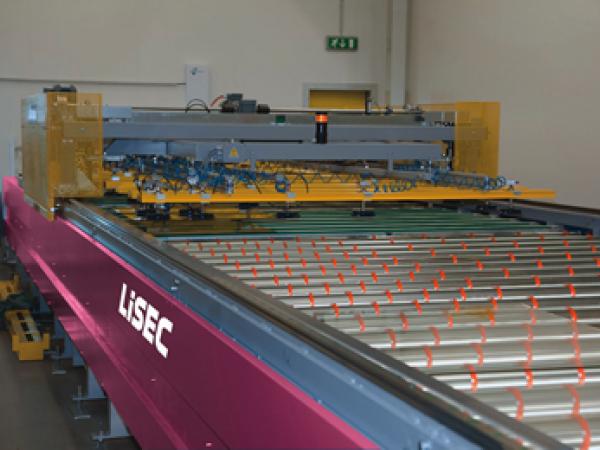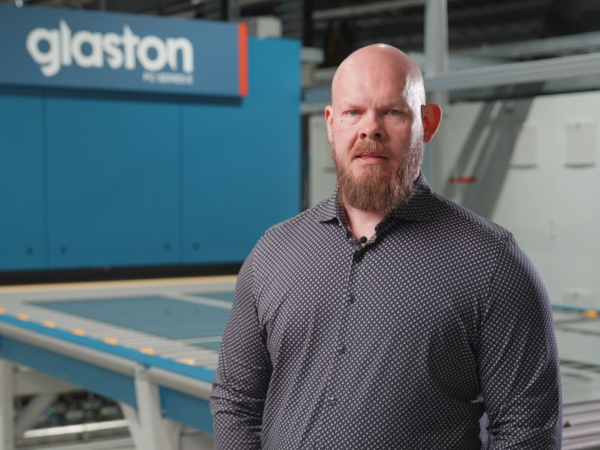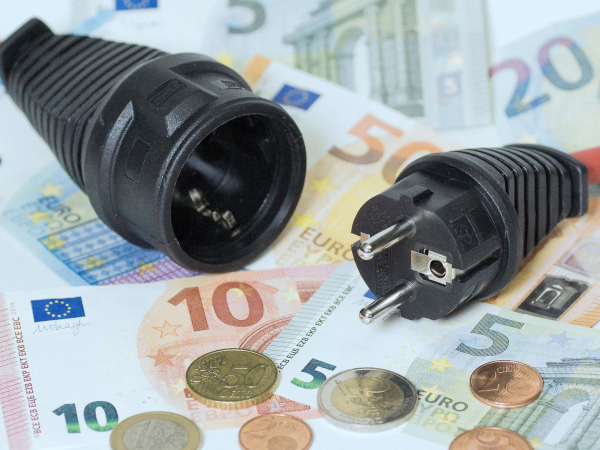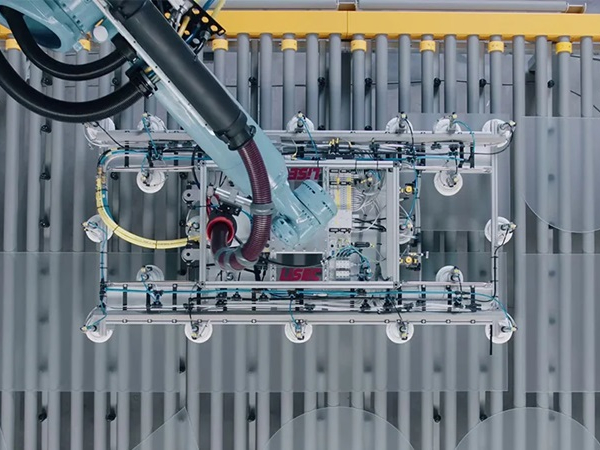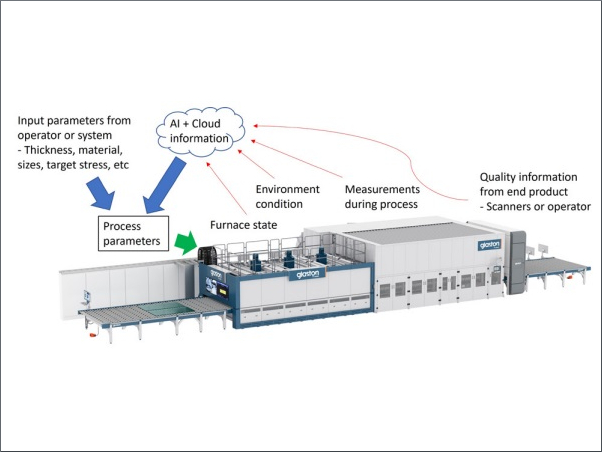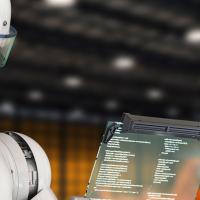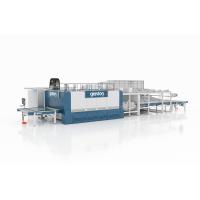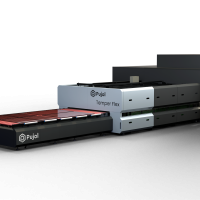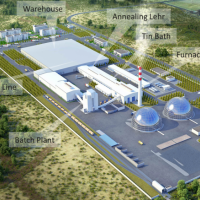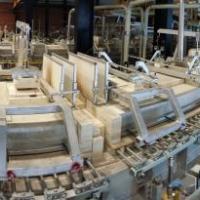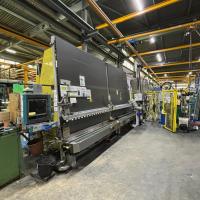At the end of 2010, LiSEC installed its brand-new laminating tunnel at one of its customers’ plants in Italy. This machine represents a milestone in the laminating industry because it can process one batch of glass in only 45 to 60 minutes, a very short time compared to the traditional high-pressure autoclave system, which requires at least 5 to 6 hours or more, considering a mixed production.
The core idea of this new technology is to split the heating phase from the cooling phase using a tandem chamber system, which shortens the cycle and, moreover, reduces energy consumption to one third compared to an autoclave cycle.
The laminating tunnel
The tunnel is made up of one heating section and one cooling section, which are separated by doors and by an intermediate chamber. The tunnel is pressurized, similarly to autoclave systems, but with lower air pressure. The vacuum process is enabled by a special tray system covered by silicone blankets and equipped with an automatic connection system and control device.
Glass sheets with a maximum size up to 2,800 x 5,100 millimetres, weighing 800 kilos and thickness up to 80 millimetres, can be processed. All kinds of interlayers can be used: refrigerated or interleaved PVB, EVA, ionomers, providing very flexible production.
This technology is protected by a patent and was developed after very intensive R&D; a prototype was built and used to prove the efficiency of the process; glass samples were produced using the technology and were tested according to the European norms for the certification of laminated glass.
.jpg)
Laminating tunnel
The most recent technical development from LiSEC is that of a brand-new laminating tunnel, which was installed at one of its Italian clients’ plants late in 2010. With incredibly short processing times and reduced energy consumption, this tunnel can also use all kinds of interlayers and, therefore, ensures high capacity but also considerable flexibility in mixed production runs.
.jpg)
Outfeed
.jpg)
Infeed
Simplified operations
The tunnel is combined with a standard pre-lamination line, where the glass panels are assembled, heated and pressed. At the end of the press, the glass is loaded horizontally onto specific trays. Several sheets form one batch, which facilitates the optimization of the loading surface. As soon as one batch is complete, the tray is picked up automatically and transferred to the tunnel parking or feeding area, where a conveyor loads the glass into the tunnel.
.jpg)
Clamps transfer
The tunnel entry door is then closed and the heating cycle is started. Glass is heated up to the set temperature (according to the interlayer type); then the batch is moved to the cooling chamber by a drive system; while the glass is cooled, another tray is fed into the heating channel and heated up, thus increasing output.
After cooling and depressurization, the tray is evacuated automatically and stored in the specific multilevel buffer (up to eight positions). The operations of the machine are simplified because of the fully automatic loading device and storing system for the trays; no operator is required during night cycles to load and unload the racks, as in the case of autoclaves.
.jpg)
Pre-lamination line - heating and pressing section
Capacity and flexibility advantages
The daily capacity of the tunnel is comparable to an autoclave for cut-to-size production. A very important advantage is the saving of energy: as already mentioned, because of the tandem chamber system, with a heating section where temperatures are always warm and a cooling chamber where temperatures are cold, there is no waste of energy like in the autoclave, which has to be heated up and cooled down for each cycle. This reduces the share of energy costs in production, which is becoming an important factor of total costs.
The batches and tray system enable high flexibility. Moreover, small quantities of laminated glass (just a few sheets) can be processed at low production costs. With the autoclave system, on the other hand, the only way to minimize the high energy consumption for each cycle is to fully load it (10 tons of glass), which represents a significant restriction.
Furthermore, single glass with minor defects (e.g. external bubbles due to warp) can be reprocessed with the vacuum system and problems can be fixed within two hours, instead of running an additional autoclave cycle or waiting and trying to integrate it into the following production cycle.
.jpg)
Horizontal washing
The advantages listed above clearly show that this machine is a good example of state-of-the-art technology. The tunnel was installed a few months ago and feedback from the market is already remarkable.
FURTHER IMPORTANT EQUIPMENT
LiSEC has also developed new important devices for the pre-lamination line:
- customized line configurations and tailor-made climatic chambers are designed to meet customer needs;
- the horizontal washer is equipped with a water conductivity control system, automatic draining of the dirty water and filling of demineralized water from the Osmosis plant into the washer tanks. This means that the water used for the washing process is always within an acceptable conductivity range, which is very important to avoid the risk of delamination;
- the accurate squaring system can also square shapes (with at least one straight edge) and assemble them completely automatically without the need to adjust them manually; the lamination of shapes is simplified and as fast as the lamination of normal glass sheets;
- the change of the PVB film during production takes place completely automatically in every single step: winding the previously used PVB roll, unwinding the current one, transporting the film into the channel system where clamps pick it up and apply it to the glass;
- the new PVB trimming system, very fast and precise, with four individual cutting tools. The glass sizes are recorded automatically during their assembly, the cutting devicesand the glass are positioned automatically for trimming;
- considerable experience in forced-air convection heating technology enables LiSEC to customize the size of the furnace according to the desired productivity levels, which results in an optimum speed-energy consumption ratio.
.jpg)
Accurate squaring system and automatic suction cup transfer
.jpg)
Automatic PVB feeding system
.jpg)
Automatic shaped glass processing
LiSEC continues to impress its customers and confirms its position as a market leader for lamination technologies. Other important innovations will be presented shortly: specific entry-level solutions for companies who want to start laminating low volumes and require very high quality finished products and reliability of equipment.
Lisec Costruzione Macchine Italia Srl
Via Aquileia, 14
31048 Olmi di S. Biagio di Callalta (TV), Italy
Tel: +39-0422-794111 - Fax: +39-0422-794191
E-mail: info@lisec.com - www.lisec.com

